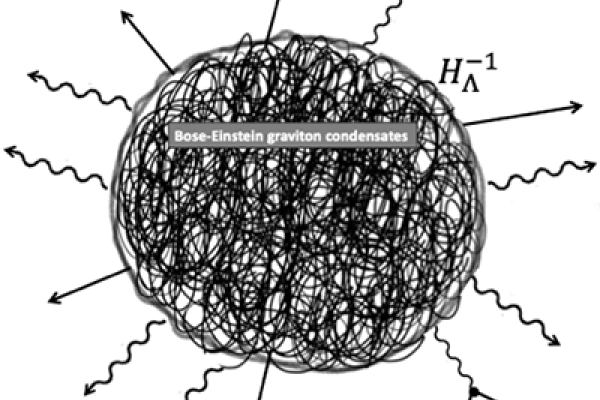A team of scientists led by ICREA-ICCUB researcher Raúl Jiménez, in collaboration with colleagues at Padova University, has unveiled a groundbreaking new theory about how our Universe began. Their study, published in the prestigious Physical Review Journals, introduces a radical shift in how we might understand the earliest moments after the Big Bang, without relying on speculative ingredients traditionally assumed by physicists.
Unpacking the mystery of the Universe’s birth
For decades, cosmologists have worked under the "inflationary paradigm", a model that suggests the Universe expanded incredibly fast in the blink of an eye, setting the stage for everything we observe today. But there’s been a catch: this theory includes too many adjustable knobs, known as “free parameters,” which can be tuned at will. In science, too much flexibility can be problematic, since it makes it hard to know whether a model is truly predicting something or simply fitting the data after the fact.
In a major scientific breakthrough, the team has proposed a model where the early Universe doesn’t need any of these arbitrary parameters. Instead, it begins with a well-established cosmic state known as de Sitter space, which is backed by current observations of dark energy.
Gravitational Waves: the key to cosmic structure
The new model doesn’t rely on hypothetical fields or particles such as the inflaton. Rather, it suggests that natural quantum oscillations of space-time itself, gravitational waves, were enough to seed the tiny differences in density that eventually grew into galaxies, stars, and planets. These gravitational ripples evolve nonlinearly, meaning they interact and build complexity over time, leading to testable predictions that researchers can now compare with real-world data.
“For decades, we’ve tried to understand the earliest moments of the Universe using models that rely on ingredients we’ve never observed,” says Raúl Jiménez, ICREA-ICCUB researcher. “What makes this proposal exciting is its simplicity and testability. We’re not adding speculative elements, we’re showing that gravity and quantum mechanics alone might explain how structure emerged in the cosmos.”
Understanding the Universe’s origin isn’t just a philosophical quest, it helps us answer fundamental questions about who we are and where everything came from. This new proposal provides a minimalist but powerful picture that is both elegant and potentially falsifiable. That’s science at its best: clear predictions that future observations (like measurements of gravitational waves and cosmic structure) can confirm or refute.
These new results show that we may not need speculative ingredients to explain the cosmos, just a deep understanding of gravity and quantum physics. If the model holds, it could mark a new chapter in how we think about the birth of the Universe.
Reference
Bertacca, D., Jiménez, R., Matarrese, S., and Ricciardone, A. (2025). “Inflation without an inflaton”. Physical Review Research, 7(3), L032010. https://doi.org/10.1103/vfny-pgc2



